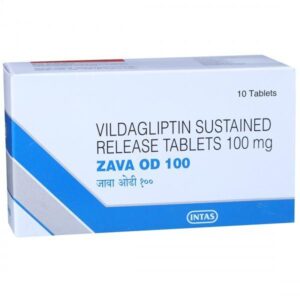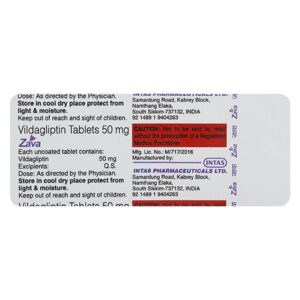VIDAGLIPTIN
VIDAGLIPTIN: Vidagliptin, also known by its brand name Galvus, is an oral medication used for the management of type 2 diabetes mellitus. It belongs to a class of drugs called dipeptidyl peptidase-4 (DPP-4) inhibitors.
Mechanism of Action:
Vidagliptin works by inhibiting the action of DPP-4 enzyme, which is responsible for the breakdown of incretin hormones. Incretins are hormone-like substances that increase insulin release and decrease glucagon secretion in response to meals. By inhibiting DPP-4, vidagliptin increases the levels of these incretin hormones, resulting in improved glycemic control.
Use:
Vidagliptin is prescribed as an adjunct to diet and exercise to improve blood sugar control in patients with type 2 diabetes. It is generally used when diet and exercise alone are not sufficient to control blood glucose levels. Vidagliptin can be used as monotherapy or in combination with other anti-diabetic medications such as metformin or insulin.
Dose:
The recommended dose of vidagliptin is typically 50 mg once daily, which can be taken with or without food. However, the dosage may vary depending on individual patient factors such as kidney function and other medications being taken. It is important to follow the prescribed dose and dosing instructions provided by the healthcare provider.
Side Effects:
The most common side effects of vidagliptin include upper respiratory tract infection, stuffy or runny nose, headache, stomach pain, nausea, and diarrhea. These side effects are usually mild and transient, and they tend to improve over time. Rarely, vidagliptin can cause pancreatitis or allergic reactions. If any severe side effects occur, it is important to seek immediate medical attention.
It is important to note that vidagliptin may have different brand names and dosages in different countries. Always consult with a healthcare provider for accurate and up-to-date information on its use, mechanism of action, and any potential side effects specific to your situation.



